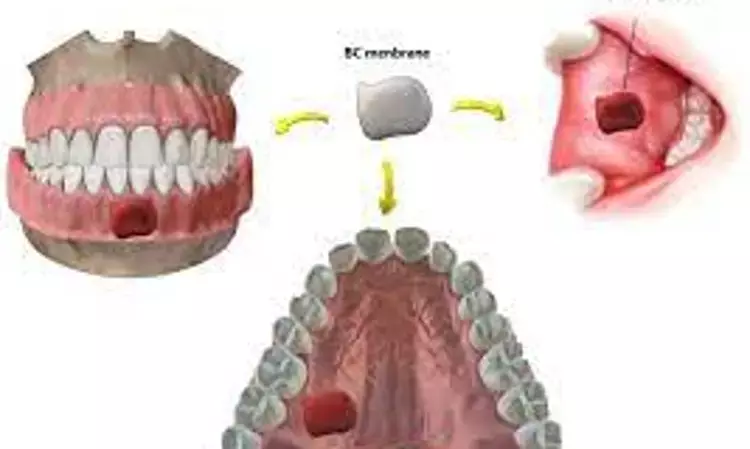- Home
- Medical news & Guidelines
- Anesthesiology
- Cardiology and CTVS
- Critical Care
- Dentistry
- Dermatology
- Diabetes and Endocrinology
- ENT
- Gastroenterology
- Medicine
- Nephrology
- Neurology
- Obstretics-Gynaecology
- Oncology
- Ophthalmology
- Orthopaedics
- Pediatrics-Neonatology
- Psychiatry
- Pulmonology
- Radiology
- Surgery
- Urology
- Laboratory Medicine
- Diet
- Nursing
- Paramedical
- Physiotherapy
- Health news
- Fact Check
- Bone Health Fact Check
- Brain Health Fact Check
- Cancer Related Fact Check
- Child Care Fact Check
- Dental and oral health fact check
- Diabetes and metabolic health fact check
- Diet and Nutrition Fact Check
- Eye and ENT Care Fact Check
- Fitness fact check
- Gut health fact check
- Heart health fact check
- Kidney health fact check
- Medical education fact check
- Men's health fact check
- Respiratory fact check
- Skin and hair care fact check
- Vaccine and Immunization fact check
- Women's health fact check
- AYUSH
- State News
- Andaman and Nicobar Islands
- Andhra Pradesh
- Arunachal Pradesh
- Assam
- Bihar
- Chandigarh
- Chattisgarh
- Dadra and Nagar Haveli
- Daman and Diu
- Delhi
- Goa
- Gujarat
- Haryana
- Himachal Pradesh
- Jammu & Kashmir
- Jharkhand
- Karnataka
- Kerala
- Ladakh
- Lakshadweep
- Madhya Pradesh
- Maharashtra
- Manipur
- Meghalaya
- Mizoram
- Nagaland
- Odisha
- Puducherry
- Punjab
- Rajasthan
- Sikkim
- Tamil Nadu
- Telangana
- Tripura
- Uttar Pradesh
- Uttrakhand
- West Bengal
- Medical Education
- Industry
Bacterial cellulose based nanocomposites offer options for moldability and combination: study

Bacterial cellulose (BC) based nanocomposites offer options for moldability and combination and also a great field to be explored, according to a recent study published in the Molecules.
Biocompatible materials and devices have attracted a great deal of interest over the past years in the medical field. Ongoing efforts from many researchers are providing novel systems that mimic the main peculiar details of native tissues. Particularly, biocompatible materials engineered with improved functionalities and complex design have been proved to offer better cell adhesion, proliferation, and differentiation.
Generally, biomaterials are in direct contact with biological tissues and they can be defined as part of a system that deals with improving or replacing any tissue, organ, or body function. Therefore, it is fundamental to carefully consider some requirements to appoint a material as a biomaterial, such as excellent biocompatibility and biodegradability and lack of toxicity.
Bacterial cellulose (BC) is a natural polymer that has fascinating attributes, such as biocompatibility, low cost, and ease of processing, being considered a very interesting biomaterial due to its options for moldability and combination. Thus, BC-based compounds (for example, BC/collagen, BC/gelatin, BC/fibroin, BC/chitosan, etc.) have improved properties and/or functionality, allowing for various biomedical applications, such as artificial blood vessels and microvessels, artificial skin, and wounds dressing among others. Despite the wide applicability in biomedicine and tissue engineering, there is a lack of updated scientific reports on applications related to dentistry, since BC has great potential for this. It has been used mainly in the regeneration of periodontal tissue, surgical dressings, intraoral wounds, and in the regeneration of pulp tissue.
This review describes the properties and advantages of some BC studies focused on dental and oral applications, including the design of implants, scaffolds, and wound-dressing materials, as well as carriers for drug delivery in dentistry.
One of the first designed and main direct applications of BC membranes in the biomedical area is as a wound dressing in the replacement of burned skin. Since then, the literature has shown an increasing number of papers related to wound dressing. In terms of a temporary covering, BC dressings are mightily recommended by manufacturers for the treatment of different types of wounds, including skin tears, pressure sores, venous stasis, second-degree burns, ischemic and diabetic wounds, traumatic abrasions and lacerations, and skin graft and biopsy sites.
Thus, the researchers concluded that aligned to the current trends and biotechnology evolutions, BC-based nanocomposites offer a great field to be explored and other novel features can be expected in relation to oral and bone tissue repair in the near future.
Reference:
Bacterial Nanocellulose in Dentistry: Perspectives and Challenges by Hélida Gomes de Oliveira Barud et al. published in the Molecules.
Dr. Shravani Dali has completed her BDS from Pravara institute of medical sciences, loni. Following which she extensively worked in the healthcare sector for 2+ years. She has been actively involved in writing blogs in field of health and wellness. Currently she is pursuing her Masters of public health-health administration from Tata institute of social sciences. She can be contacted at editorial@medicaldialogues.in.
Dr Kamal Kant Kohli-MBBS, DTCD- a chest specialist with more than 30 years of practice and a flair for writing clinical articles, Dr Kamal Kant Kohli joined Medical Dialogues as a Chief Editor of Medical News. Besides writing articles, as an editor, he proofreads and verifies all the medical content published on Medical Dialogues including those coming from journals, studies,medical conferences,guidelines etc. Email: drkohli@medicaldialogues.in. Contact no. 011-43720751


